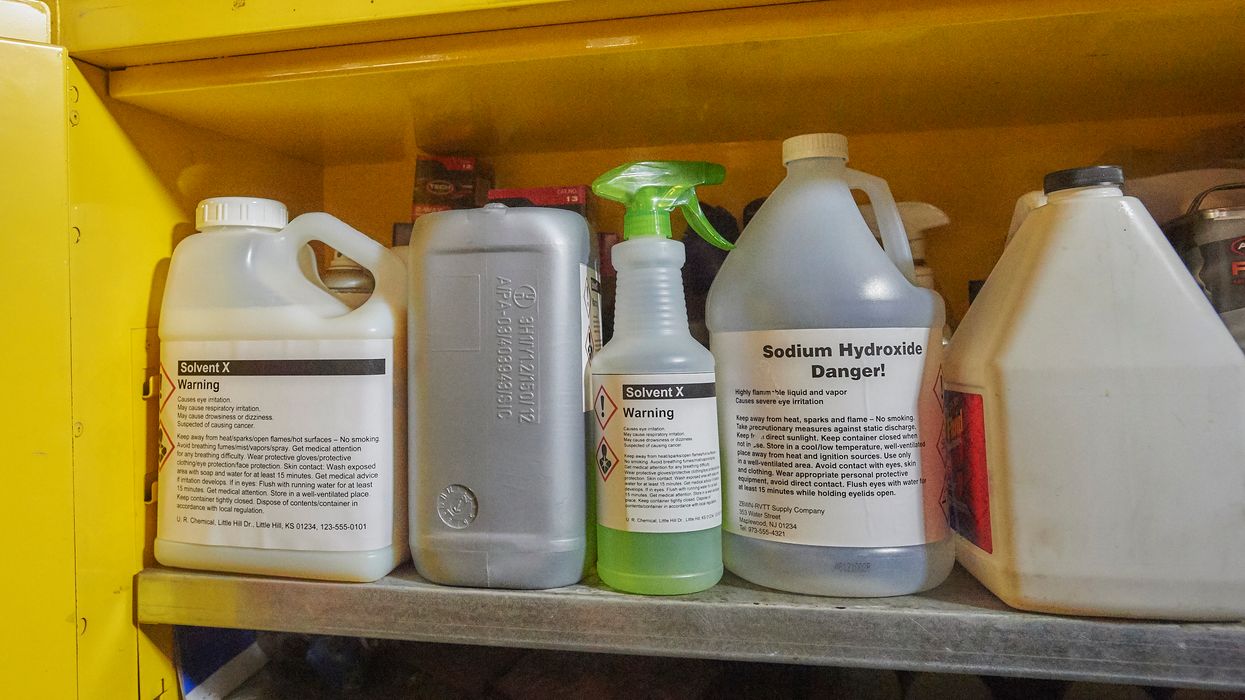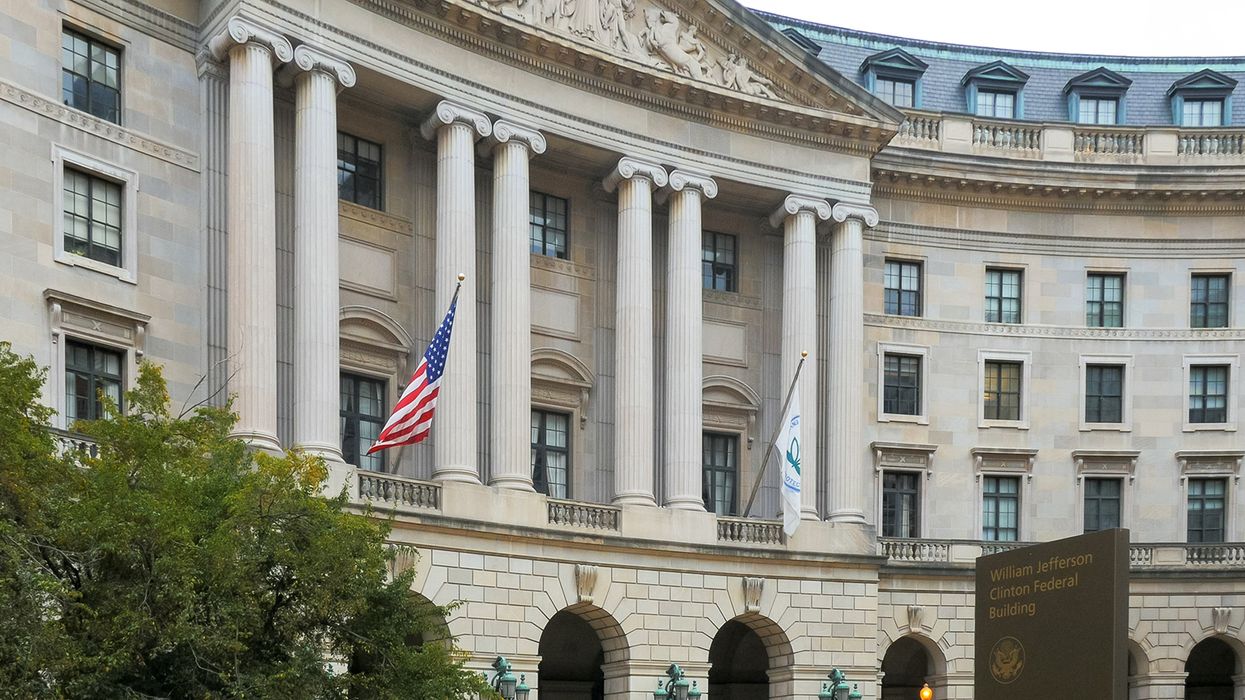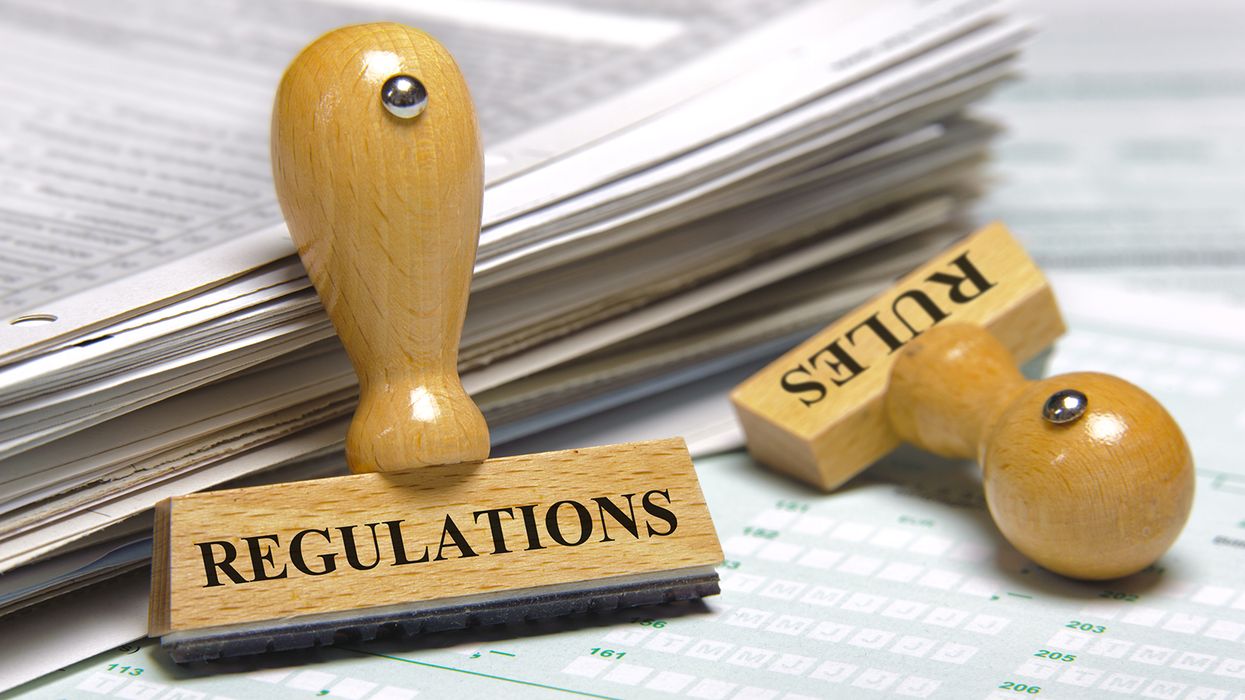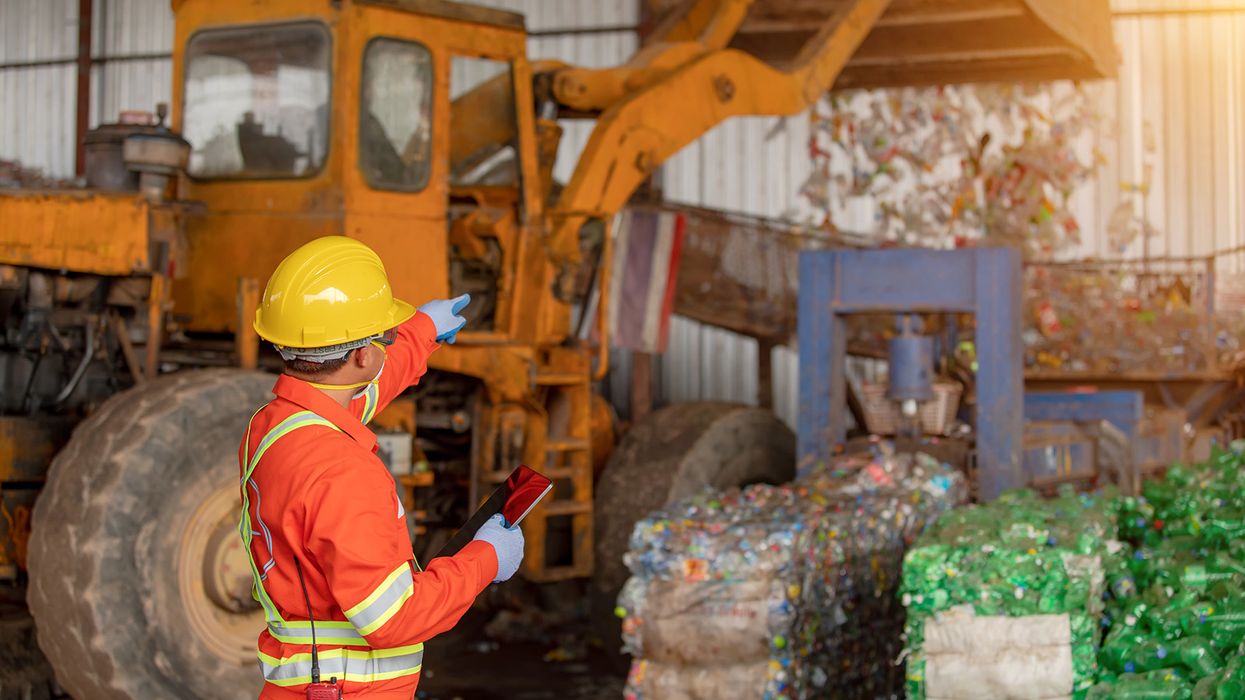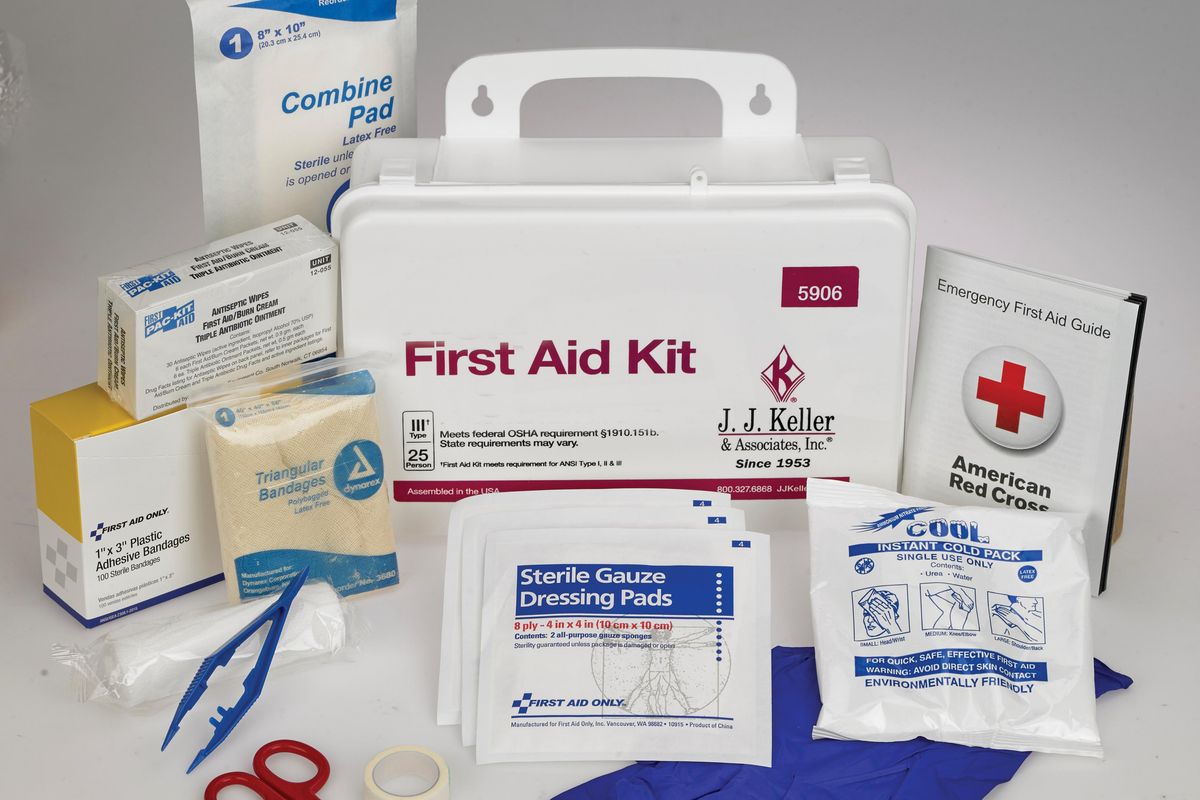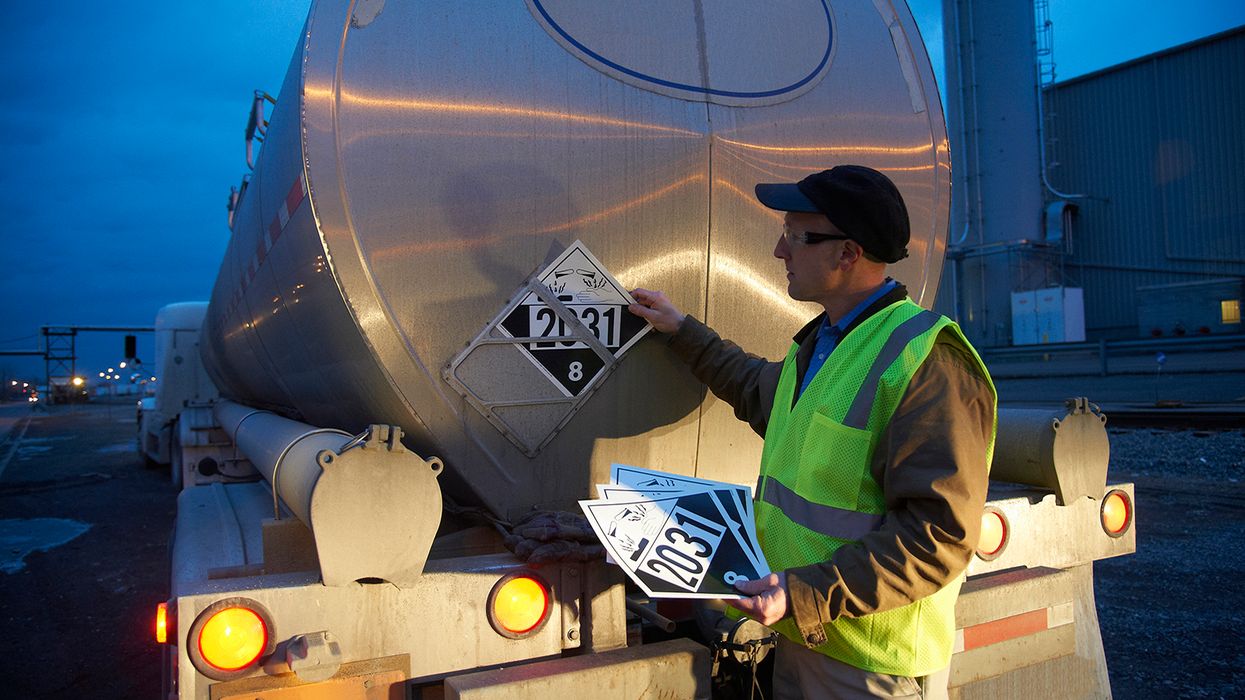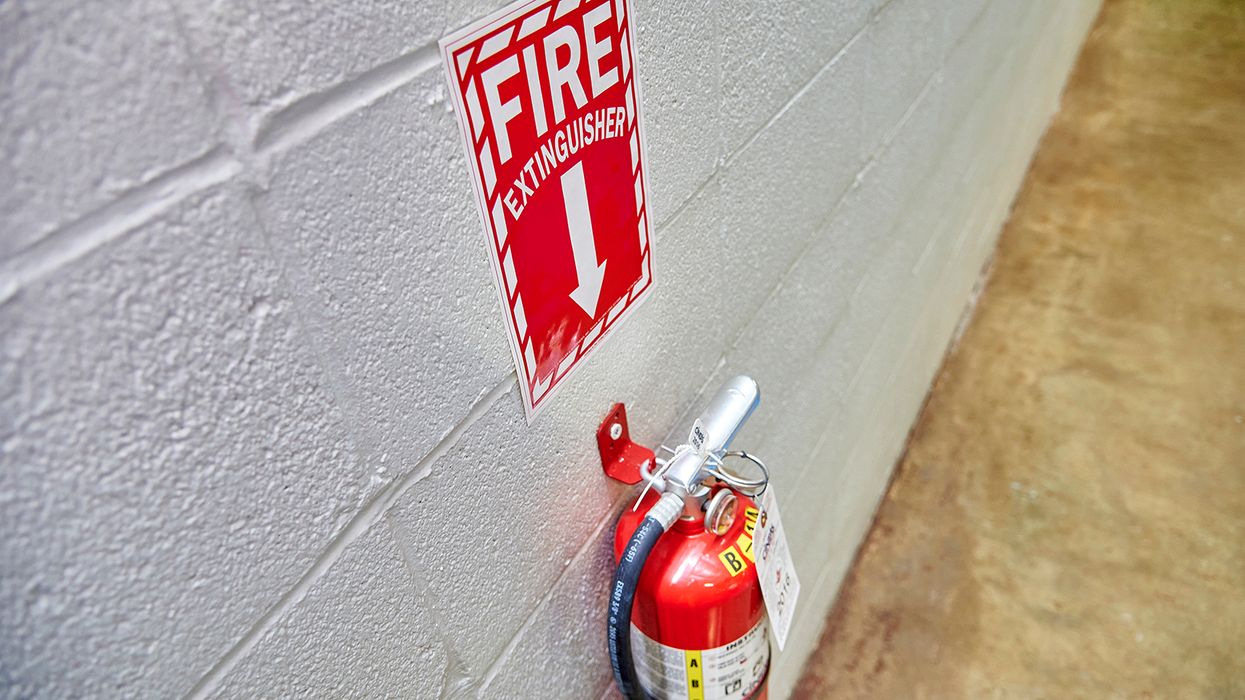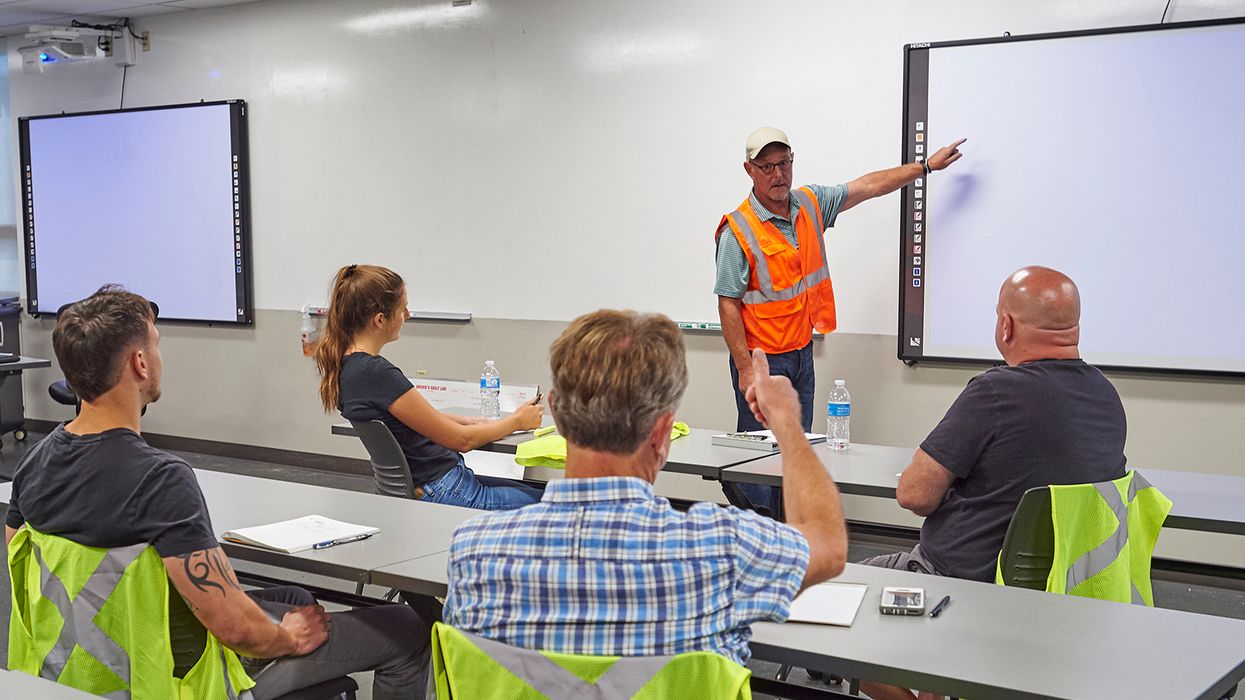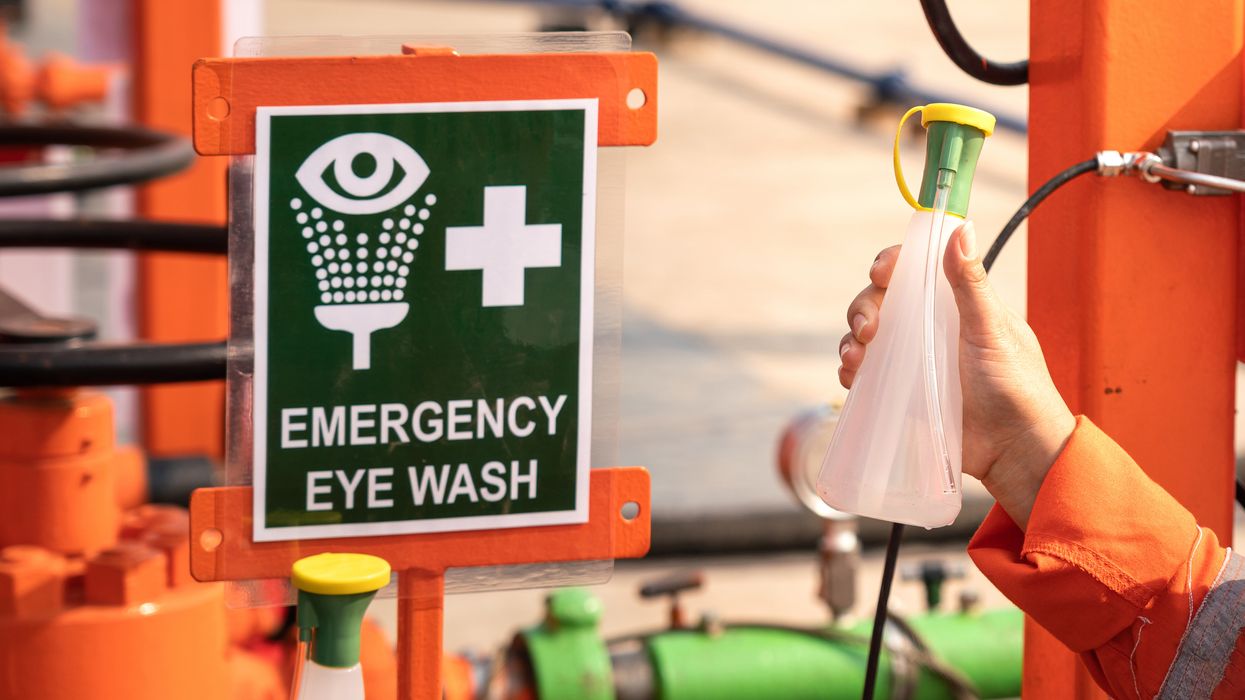89 FR 82957 Electronic Signatures, Forms and Storage for Drug and Alcohol Testing Records
DEPARTMENT OF TRANSPORTATION
Office of the Secretary
49 CFR Part 40
Pipeline and Hazardous Materials Safety Administration
49 CFR Part 199
[Docket DOT-OST-2022-0027]
RIN 2105-AF01
Electronic Signatures, Forms and Storage for Drug and Alcohol Testing Records
AGENCY: Office of the Secretary, Department of Transportation (DOT).
ACTION: Notice of proposed rulemaking (NPRM).
SUMMARY: The Department of Transportation (DOT or Department) proposes to amend its regulations for conducting workplace drug and alcohol testing for the federally regulated transportation industry to allow, but not require, electronic signatures on documents required to be created and utilized under the regulations, the use of electronic versions of forms, and the electronic storage of forms and data. The regulatory changes would apply to DOT-regulated employers and their contractors (“service agents”) who administer their DOT-regulated drug and alcohol testing programs. Currently, employers and their service agents must use, sign and store paper documents exclusively, unless the employer is utilizing a laboratory's electronic Federal Drug Testing Custody and Control Form (electronic CCF) system that has been approved by the Department of Health and Human Services (HHS). DOT is required by statute to amend its regulations to authorize, to the extent practicable, the use of electronic signatures or digital signatures executed to electronic forms instead of traditional handwritten signatures executed on paper forms. This rulemaking also responds to an April 2, 2020, petition for rulemaking from DISA Global Solutions, Inc. (DISA), requesting that DOT regulations be amended to allow the use of an electronic version of the alcohol testing form (ATF) for DOT-authorized alcohol testing. The proposed regulatory amendments are expected to provide additional flexibility and reduced costs for the industry while maintaining the integrity and confidentiality requirements of the drug and alcohol testing regulations. In addition, DOT proposes to amend the Pipeline and Hazardous Materials Safety Administration (PHMSA) regulation for conformity and to make other miscellaneous technical changes and corrections.
DATES: Comments on this NPRM must be received on or before December 16, 2024.
ADDRESSES: You may submit comments identified by Docket Number DOT-OST-2022-0027 using any of the following methods:
• Federal eRulemaking Portal: Go to https://www.regulations.gov/docket/DOT-OST-2022-0027/document. Follow the online instructions for submitting comments.
• Mail: Docket Management Facility, U.S. Department of Transportation, 1200 New Jersey Avenue SE, West Building, Ground Floor, Room W12-140, Washington, DC 20590-0001.
• Hand Delivery or Courier: West Building, Ground Floor, Room W12-140, 1200 New Jersey Avenue SE, Washington, DC, between 9 a.m. and 5 p.m. ET, Monday through Friday, except Federal holidays. To be sure someone is there to help you, please call (202) 366-9317 or (202) 366-9826 before visiting Dockets Operations.
• Fax: 202-493-2251.
To avoid duplication, please use only one of these methods. See the “Public Participation and Request for Comments” portion of the SUPPLEMENTARY INFORMATION section for instructions on submitting comments, including collection of information comments for the Office of Information and Regulatory Affairs, Office of Management and Budget (OMB).
FOR FURTHER INFORMATION CONTACT:
Mike Huntley, Office of Drug and Alcohol Policy and Compliance, 1200 New Jersey Avenue SE, Washington, DC 20590; telephone number 202-366-3784; ODAPCwebmail@dot.gov. If you have questions on viewing or submitting material to the docket, contact Docket Services, telephone (202) 366-9826.
SUPPLEMENTARY INFORMATION:
This NPRM is organized as follows:
I. Executive Summary
II. Public Participation and Request for Comments
A. Submitting Comments
B. Viewing Comments and Documents
C. Privacy Act
III. Legal Basis for the Rulemaking
IV. Background
V. Advance Notice of Proposed Rulemaking (ANPRM) Overview
VI. Federal Motor Carrier Safety Administration (FMCSA) Rulemaking on Electronic Documents and Signatures
VII. Amending Part 40 To Permit Electronic Documents and Signatures
VIII. Electronic ATF
IX. Section-by-Section Analysis
X. Regulatory Analyses and Notices
I. Executive Summary
Purpose and Summary of the Major Provisions
This proposed rule would establish parity between paper and electronic documents and signatures and expand businesses' and individuals' ability to use electronic methods to comply with the Department's drug and alcohol testing regulation, 49 CFR part 40, “Procedures for Transportation Workplace Drug and Alcohol Testing Programs” (part 40). Businesses and individuals subject to part 40 would continue to have the choice to use paper documents and traditional “wet” signatures. This proposed rule would also modify references to recordkeeping and reporting methods throughout part 40 to make them technologically neutral.
This proposed rulemaking responds to a statutory mandate set forth in section 8108 of the Fighting Opioid Abuse in Transportation Act, part of the SUPPORT for Patients and Communities Act, Public Law 115-271 (see 49 U.S.C. 322 note). The proposed rulemaking would take action consistent with the Government Paperwork Elimination Act (GPEA) (division C, title XVII, secs. 1701-1710, Pub. L. 105-277) and the Electronic Signatures in Global and National Commerce Act (E-SIGN) (Pub. L. 106-229) with regard to DOT's part 40 regulations.
II. Public Participation and Request for Comments
A. Submitting Comments
If you submit a comment, please include the docket number for this NPRM (Docket No. DOT-OST-2022-0027), indicate the specific section of this document to which each comment applies, and provide a reason for each suggestion or recommendation. You may submit your comments and material online or by fax, mail, or hand delivery, but please use only one of these means. The Office of the Secretary (OST) recommends that you include your name and a mailing address, an email address, or a phone number in a cover letter or an email so that OST can contact you if there are questions regarding your submission.
To submit your comment online, go to https://www.regulations.gov/docket/DOT-OST-2022-0027/document, click on this NPRM, click “Comment,” and type your comment into the text box on the following screen.
If you submit your comments by mail or hand delivery, submit them in an unbound format, no larger than 8 1/2 by 11 inches, suitable for copying and electronic filing. If you submit comments by mail and would like to know that they reached the facility, please enclose a stamped, self-addressed postcard or envelope.
OST will consider all comments and material received during the comment period in determining how to proceed with any final rule.
B. Viewing Comments and Documents
To view comments, as well as any documents mentioned in this preamble as available in the docket, go to https://www.regulations.gov. Insert the docket number, DOT-OST-2022-0027, in the keyword box, and click “Search.” Next, click the “Open Docket Folder” button and choose the document to review. If you do not have access to the internet, you may view the docket online by visiting the Docket Management Facility in Room W12-140 on the ground floor of the DOT West Building, 1200 New Jersey Avenue SE, Washington, DC 20590-0001, between 9 a.m. and 5 p.m. ET, Monday through Friday, except Federal holidays. To be sure someone is there to help you, please call (202) 366-9317 or (202) 366-9826 before visiting the Docket Management Facility.
C. Privacy Act
In accordance with 5 U.S.C. 553(c), DOT solicits comments from the public to better inform its rulemaking process. DOT posts these comments, without edit, including any personal information the commenter provides, to www.regulations.gov, as described in the system of records notice (DOT/ALL-14 FDMS), which can be reviewed at https://www.transportation.gov/individuals/privacy/privacy-act-system-records-notices under the heading of “Department-Wide System of Records Notices”.
III. Legal Basis for the Rulemaking
This rulemaking is promulgated under the authority enacted in the Omnibus Transportation Employee Testing Act of 1991 (OTETA) (Pub. L. 102-143, tit. V, 105 Stat. 952) and codified at 49 U.S.C. 45102 (aviation), 49 U.S.C. 20140 (rail), 49 U.S.C. 31306 (motor carrier), and 49 U.S.C. 5331 (public transportation), as well as the Department's authority in 49 U.S.C. 322 and the PHMSA authorities specified in the proposed regulatory text for this action.
According to Public Law 115-271, the Secretary of Transportation is required to “issue a final rule revising part 40 of title 49, Code of Federal Regulations, to authorize, to the extent practicable, the use of electronic signatures or digital signatures executed to electronic forms instead of traditional handwritten signatures executed on paper forms.” (49 U.S.C. 322 note) The statute set the deadline for this action as not later than 18 months after HHS establishes a deadline for a certified laboratory to request approval for fully electronic CCFs ( Id. ) On April 7, 2022, HHS set that deadline as August 31, 2023 (87 FR 20528). HHS has extended the deadline to August 31, 2026, to enable sufficient time for all HHS-certified laboratories to identify and contract with an electronic CCF supplier or to develop an electronic CCF. The deadline for DOT's regulatory amendments would therefore be February 29, 2028.
There are two additional Federal statutes relevant to the implementation of electronic document and signature requirements.
The Government Paperwork Elimination Act (GPEA), codified at 44 U.S.C. 3504 note, 1 was enacted to improve customer service and governmental efficiency through the use of information technology. The GPEA defines an electronic signature as a method of signing an electronic communication that: (a) identifies and authenticates a particular person as the source of the electronic communication; and (b) indicates such person's approval of the information contained in the electronic communication. Id. It also requires OMB to ensure Federal agencies provide for: (a) the option of maintaining, submitting; or disclosing information electronically, when practicable; and (b) the use and acceptance of electronic signatures when practicable. The GPEA states that electronic records submitted pursuant to procedures developed under title XVII for the submission of records to Federal agencies and electronic signatures used in accordance with those procedures shall not be denied legal effect, validity, or enforceability merely because they are in electronic form. Id.
1 Division C, title XVII (sec. 1701-1710) of Public Law 105-277, 112 Stat. 2681-749, enacted on October 21, 1998.
The Electronic Signatures in Global and National Commerce Act (E-SIGN), codified at 15 U.S.C. 7001-7031, 2 was designed to promote the use of electronic contract formation, signatures, and recordkeeping in private commerce by establishing legal equivalence between traditional paper-based methods and electronic methods. The E-SIGN Act allows the use of electronic records to satisfy any statute, regulation, or rule of law requiring that such information be provided in writing if the consumer has affirmatively consented to such use and has not withdrawn consent. Specifically, the statute establishes the legal equivalence of the following types of documents with respect to any transaction in or affecting interstate or foreign commerce, whether in traditional paper or electronic form: (a) contracts, (b) signatures, and (c) other records (15 U.S.C. 7001(a)(1)).
2 Public Law 106-229, 114 Stat. 464, enacted on June 30, 2000.
IV. Background
The Department's drug and alcohol testing regulations were promulgated at a time when the ability to sign and retain official records electronically—now commonplace in many business segments—was not available. Over the course of several years, we have adopted measures that have reduced the paper documentation associated with the drug and alcohol testing program without compromising the integrity and confidentiality requirements of the program. In 2003, we standardized the form for employers to report their Management Information System (MIS) aggregate drug and alcohol testing data, as well as the specific data collected. 3 When creating a ONE-DOT MIS Form, we then authorized employers to submit a single standardized form via a web portal. In 2015, we issued a final rule to allow employers, collectors, laboratories, and medical review officers (MROs) to use the electronic version of the Federal Drug Testing CCF in the DOT-regulated drug testing program. 4 That final rule also incorporated into the regulations the requirement to establish adequate confidentiality and security measures to ensure that confidential employee records are not available to unauthorized persons when using the electronic CCF. We also included language protecting the physical security of records, access controls, and computer security measures to safeguard confidential data in electronic form when using the electronic CCF.
3 68 FR 43946 (July 25, 2003).
4 80 FR 19551 (Apr. 13, 2015).
Consistent with the statutory mandate in 49 U.S.C. 322 note, we propose amendments to part 40 to permit the use of electronic signatures, forms, and records storage for drug and alcohol testing records throughout the regulation, including the use of an electronic ATF for DOT-authorized alcohol testing. We emphasize that electronic signatures, forms, and records would not be required; we would continue to allow paper, or hard-copy use with traditional “wet signatures.”
These proposed amendments would establish parity between paper and electronic collection and submission of information required under our regulations (and remain compatible with applicable OMB guidance on implementing electronic signatures 5 ) by allowing further use of electronic means and methods to comply with part 40 requirements. Many employers and their service agents have already instituted the use of electronic signatures, forms, and records storage for the non-DOT regulated testing that they conduct. DOT supports this transition to a paperless system and is committed to ensuring that the movement to a partially or fully electronic part 40 is done to maximize program efficiencies and reduce costs, while maintaining the integrity and confidentiality requirements of the program.
5https://www.whitehouse.gov/wp-content/uploads/2017/11/2000-M-00-15-OMB-Guidance-on-Implementing-the-Electronic-Signatures-in-Global-and-National-Commerce-Act.pdf.
Electronic documents would have a high degree of forensic defensibility as long as any changes made to the document are in the document's electronic footprint, which shows when the document or signature, as applicable, was created; when, and if, changes were made; who made the changes; and when, as applicable, a document was transmitted to and received by the receiving entity. The use of electronic forms and signatures in part 40 would help DOT-regulated employers and their service agents improve their workflow efficiency through faster turnaround times for required documents. Cost savings would result through reduced printing and delivery/shipping costs, and expedited transmission of information allowing for more timely decisions. We believe this proposed rule, if adopted, would also mitigate the longstanding problems ( e.g., delays in processing times of test results, cancelling of test results, etc.) associated with illegible and lost copies of paper documents.
V. Advance Notice of Proposed Rulemaking (ANPRM) Overview
On August 5, 2022, we published an ANPRM requesting public comment on how part 40 could be amended, as required by the statute, to allow electronic signatures, forms, and recordkeeping (87 FR 47951). We requested information from DOT-regulated employers and their service agents regarding if and how they are already handling electronic signatures, records transmission, and records storage in their non-DOT testing programs. In addition, we requested comments and information on appropriate performance standards, and on whether particular methods or performance standards have been successful or unsuccessful. We also asked a number of general questions on the potential advantages, risks, ramifications, and required safeguards associated with the use of electronic signatures, forms, and records in the DOT drug and alcohol testing program. We asked questions about specific sections of part 40 that we anticipated would be affected by prospective changes to implement electronic signatures, forms, and records. Finally, we asked a number of questions regarding the use of an electronic ATF for DOT-regulated alcohol tests.
We received 72 comments in response to the ANPRM, including comments from individuals, testing laboratories, MROs, and MRO organizations, substance abuse professionals (SAP) and SAP organizations, and various associations representing DOT-regulated transportation workers subject to mandatory drug and alcohol testing under part 40.
A few individuals expressed opposition to the adoption of electronic signatures, forms, and recordkeeping, citing concerns about the need for the rulemaking, risk to personal information from hackers or mismanaged electronic processes and procedures, and misuse of electronic forms and signatures. To meet our statutory mandate and in consideration of concerns about safeguarding personal information and appropriate use of the information in developing the NPRM, DOT proposes to require security measures for electronic forms and signatures used under part 40 that are the same as those currently in place for the electronic CCF specified in 49 CFR 40.40(c)(5).
Most commenters were supportive of changes to amend part 40 that would permit, but not require, the use of electronic signatures, forms, and recordkeeping. Commenters supporting revisions to part 40 noted that electronic signatures, forms, and recordkeeping are used in virtually every industry today—including but not limited to the banking, insurance, medical, and legal industries. Commenters supported the use of performance standards instead of technology-specific standards to ensure that, once established, standards do not become obsolete given the rapidly evolving nature of information technology standards and practices. Commenters stated that allowing electronic signatures, forms, and recordkeeping would make the drug testing process much more efficient and would result in cost savings. Commenters also stated that it would be safer to store records electronically since records could be backed-up, secured, and protected from tampering and unauthorized access and use.
VI. Federal Motor Carrier Safety Administration (FMCSA) Rulemaking on Electronic Documents and Signatures
In developing this NPRM, we looked to a rule promulgated by DOT's FMCSA that permits the use of electronic methods to generate, certify, sign, maintain, or exchange records so long as the documents accurately reflect the required information and can be used for their intended purpose. (83 FR 16210, Apr. 16, 2018) The rule applies to documents that FMCSA requires entities or individuals to retain. FMCSA permits, but does not require, anyone to satisfy FMCSA requirements by using electronic methods to generate, maintain, or exchange documents. The substance of the document must otherwise comply with applicable Federal laws and FMCSA rules. FMCSA also permits, but does not require, anyone required to sign or certify a document to do so using electronic signatures, defined, as in the GPEA, as a method of signing an electronic communication that: (1) identifies and authenticates a particular person as the source of the electronic communication; and (2) indicates such person's approval of the information contained in the electronic communication. FMCSA allows for the use any available technology for electronic signatures, so long as the signature otherwise complies with FMCSA's requirements.
FMCSA adopted broad performance standards for electronic documents and signatures—as specified in GPEA and E-SIGN—rather than detailed, technology specific standards that would likely become obsolete with inevitable changes in information technology standards and practices. FMCSA's April 2018 rule has been in effect for more than five years, and the definitions and requirements established in that rule have stood the test of time despite the many changes that have occurred with respect to electronic documents and signatures. We are unaware of any FMCSA-regulated entities that have reported issues to FMCSA regarding the use of electronic documents or signatures to meet the requirements of the FMCSRs since the rule became effective in 2018.
VII. Amending Part 40 To Permit Electronic Documents and Signatures
In this NPRM, we propose to permit but not require electronic documents, signatures, and recordkeeping in part 40. Additionally, we propose a performance standard approach as opposed to establishing technology-specific standards. Where it is possible to do so, establishing the same or substantively similar regulatory requirements for common issues across DOT modal agencies—such as the use of electronic documents and signatures—helps the Department maintain a consistent regulatory approach for those common issues.
There are currently more than 60 references to the term “written” in part 40, and more than 20 additional references to the term “in writing.” We propose to add a definition of “written or in writing” in part 40, to eliminate any distinction between paper and electronic documentation and establish technological neutrality throughout the entirety of part 40.
FMCSA's rule does not apply to documents that individuals or entities are required to file directly with FMCSA. In its April 2018 final rule, FMCSA explained that while industry could use electronic signatures and submit information directly to the FMCSA in certain situations, 6 adapting all FMCSA systems to allow for use of electronic signatures and submissions would significantly delay the implementation of the rule for use by third parties as it would require FMCSA to develop and implement technology systems to allow for direct submission to FMCSA from regulated parties. FMCSA noted that development of such systems could take several years, and therefore saw no reason to make private parties' use of electronic signatures and records retention contingent upon FMCSA's ability to receive submissions electronically because doing so would delay potential benefits to be gained by third parties.
6 As an example, Certified Medical Examiners may use electronic signatures, if they choose to do so, to sign medical forms, certificates, and a new driver medication report. If FMCSA requests these forms, they are uploaded in portable document format (PDF) to the Medical Examiner's account associated with the National Registry of Certified Medical Examiners for FMCSA to access.
In contrast to FMCSA's regulations, part 40 does not require entities or individuals to submit documents directly to the Department except for MIS aggregate drug and alcohol testing data that employers subject to DOT or U.S. Coast Guard (USCG) drug and alcohol testing regulations must submit annually. Each of the various documents required and used as part of the DOT drug and alcohol testing program under part 40 ( e.g., employee drug and alcohol testing records, MRO reports and records, SAP reports and records) are documents that are created by, exchanged between, and maintained by a person or entity involved in the testing process—but are not required to be submitted directly to DOT.
As noted earlier, and specifically with respect to the required MIS data, we standardized the form for employers to report their aggregate drug and alcohol testing data, as well as the specific data collected, more than 20 years ago. At that time, we authorized employers to submit the ONE-DOT MIS form via a web portal. Today, the Federal Aviation Administration, FMCSA, Federal Railroad Administration, and Federal Transit Administration permit employers to submit that same drug and alcohol testing data via the internet, and PHMSA requires that the data be submitted electronically. If employers submit the data electronically via the internet, they are not required to submit a hard copy. DOT recommends that employers have a copy of their data available (either hard copy or in electronic format) in the event an auditor or inspector requests a copy.
From the above, and because the only documents that part 40 requires to be submitted directly to the Department are already permitted to be, and in some cases required to be, submitted electronically, there is no need for us to limit the applicability of our proposal as FMCSA did in its 2018 final rule.
Several commenters noted that they already use electronic signatures and documents for their non-DOT drug and alcohol testing program, and in some cases, have done so for many years. In doing so, these commenters have had to establish appropriate confidentiality and security measures to ensure that confidential employee records cannot be accessed by unauthorized persons, including protecting the physical security of records, access controls, and computer security measures to safeguard confidential data in electronic form. The same general requirements were added to the current §40.40(c)(5) when we approved the use of the electronic CCF for use in DOT drug testing in 2015, 7 and we propose the same requirements in this NPRM for the use of electronic signatures, documents, and recordkeeping throughout the entirety of part 40.
7 The 2015 revisions amended then §40.45(c)(5), which was redesignated as §40.40(c)(5) in the May 2023 final rule to include oral fluid testing in the DOT drug testing program (88 FR 27596, May 2, 2023).
Ensuring that confidential employee records are not available to unauthorized persons is an important element of part 40's protections for employees that are subject to DOT's drug and alcohol testing rules. We believe that the failure of a service agent to provide or maintain a secure/confidential electronic system should constitute the basis for the Department to start a public interest exclusion (PIE) proceeding, and propose to add this to the list of examples provided in §40.365(b).
Throughout part 40, information and documents are required to be transmitted and/or communicated between service agents ( e.g., collectors, screening test technicians (STTs) and breath alcohol technicians (BATs), laboratories, MROs, SAPs, and consortium/third party administrators (C/TPAs)), employers, and employees). Although part 40 does not currently require the party receiving these communications and/or documents to affirmatively confirm receipt of such from the sender, in some instances, regardless of whether the document is electronic or a hard copy, we believe that it may be important for the receiving party to verify that those required communications and/or documents were received.
For example, under §40.25, an employer intending to use an employee to perform safety-sensitive functions must, after obtaining an employee's written consent, request information about the employee's drug and alcohol testing record from previous DOT-regulated employers. After receiving a copy of the employee's written consent, the previous employer must immediately provide the requested information to the employer making the inquiry. If an employer is subsequently investigated/audited by the appropriate DOT mode, it may be beneficial for both the gaining employer and the previous employer to be able to affirmatively demonstrate that the employee's written consent and previous testing record were sent and received as required.
Sections 40.191(d) and 40.261(c)(1) require a collector or MRO (for drug tests) or a BAT, STT, or a physician evaluating a “shy lung” situation (for alcohol tests), respectively, to—when an employee refuses to participate in a part of the testing process—terminate the testing process, document the refusal, and immediately and directly notify the employer's designated employer representative (DER) by any means that ensures the refusal notification is immediately received. Because this notification of a refusal to an employer is of an urgent nature, it may be advisable to require the DER to affirmatively confirm receipt of the required notification from the collector, MRO, BAT, STT, or physician. For example, §§40.191(d) and 40.261(c)(1) could be amended to read “. . . immediately notify the DER by any means and ensure that the refusal notification is immediately received”.
While we are not proposing new requirements in this NPRM regarding confirmation of receipt in the sections discussed above (or in other part 40 requirements), we seek comment regarding whether it may be beneficial or advisable to do so, and if so, for which specific sections of part 40.
VIII. Electronic ATF
The ATF has been in use in the DOT alcohol testing program since 1994 (see 59 FR 7349, Feb. 15, 1994). The ATF must be used to document every DOT alcohol test. DOT regulations at 49 CFR 40.225 set forth the requirements for use of the form, and 49 CFR part 40, appendix G, contains a facsimile (reference copy) of the form. The ATF is a three-part carbonless manifold form used by DOT-regulated employers to document the testing event when testing employees subject to DOT alcohol testing. When the employee is tested, both the employee and the STT and/or the BAT will complete the ATF in various sections. The STT/BAT documents the result(s) by either writing in the screening result or attaching the screening and/or confirmation result printed by the evidential breath testing devices (EBT) onto the ATF, and then sends Copy 1 to the employer, provides Copy 2 to the employee, and retains Copy 3 for their records.
On April 2, 2020, DISA petitioned the Department to amend part 40 to allow for the use of an electronic version of the ATF for DOT mandated alcohol testing. In support of its petition, DISA stated that “The requested amendment to 49 CFR part 40 will enable a parallel process for the documentation of DOT-mandated alcohol tests aligned with the similarly situated amendment previously approved for drug testing.” DISA believes that allowing the use of an electronic ATF will result in several benefits to the industry, including “increased efficiency, security and accuracy in documentation of DOT alcohol tests; paperwork reduction; improved process for conducting a DOT alcohol test in conjunction with a DOT drug test when an electronic version of the federal CCF is used for the drug test; reduction of errors and omissions in the completion of the ATF; and improved efficiency and efficacy in the transmission and record retention of alcohol test results.”
DISA noted that non-DOT workplace breath alcohol testing has been conducted using electronic versions of an alcohol testing form that mirrors the DOT ATF for more than five years. Based on experience using those electronic forms for non-DOT testing, DISA cites improved efficiency and accuracy of documentation because: (1) employer and employee information is entered via computer and thus not dependent on reading and deciphering hand-written entries, (2) date time stamps of the testing are automated and not subject to fluctuation or error, (3) transmission of documentation on completed tests is more secure using databases accessed only via protected password and personal identification number (PIN) to authorized employers or their designated agents, and (4) transmission of test result information is faster and more secure than existing transmission options of scanning and emailing attachments or facsimile.
DISA also noted that permitting use of an electronic ATF for DOT-regulated alcohol testing “will substantially reduce cost, by eliminating the requirement for the printing and distribution of carbonless three-ply paper ATFs. The proposed electronic ATF option would still provide for printed paper images to be made available to the employee, the employer, and the alcohol technician, [but] eliminates the requirement for the more expensive carbonless 3 ply paper ATF.”
For the reasons described by DISA in its petition, and recognizing that significant benefits and cost reductions have resulted from use of the electronic CCF for drug testing, we believe that it is likewise appropriate to permit the use of electronic ATFs in part 40 for DOT-regulated testing. Permitting but not requiring the use of an electronic ATF would be consistent with our proposal to permit, but not require, the use of electronic documents and signatures throughout the entirety of part 40 as discussed above. As several commenters noted, the use of an electronic ATF has been used in non-DOT testing for 5-10 years, and the same developers of the electronic CCFs have developed the electronic ATFs. Any electronic ATF used under part 40 for DOT-regulated employees would have to be identical in form and content to the DOT ATF in appendix I to part 40. 8 Just as we imposed general confidentiality and security requirements when electronic CCFs were permitted to be used under part 40, we believe that it is necessary to include the same general requirements relating to the use of electronic ATFs to ensure that confidential employee records cannot be accessed by unauthorized persons.
8 The ATF form was redesignated from appendix G to appendix I as part of the rulemaking process culminating in the May 2023 final rule. During that process, the form was reviewed by the public and DOT received no comment on the form.
Manufacturers of EBTs and alcohol screening devices (ASD) used in DOT alcohol tests must obtain approval from the National Highway Traffic Safety Administration (NHTSA) and then be listed on the Office of Drug and Alcohol Policy and Compliance's (ODAPC) website before those devices may be used in DOT alcohol testing.
IX. PHMSA Proposed Changes
PHMSA is proposing to amend §§199.3, 199.117, and 199.227 and to add §199.4 to conform to the proposed changes in part 40 and to clarify that the proposed changes in part 40 apply to part 199. These changes will help the readers of part 199 find the applicable regulations in part 40 with regards to the definition of terms and record keeping requirements. We also propose to amend §§199.119 and 199.229 by changing the reference of “appendix H” to “appendix J” to conform to the amendment of part 40 published on May 2, 2023.
X. Section-by-Section Analysis
Section 40.3 What do the terms used in this regulation mean?
We propose to add a definition of “electronic signature.” The rule would define an electronic signature as a method of signing an electronic communication that identifies and authenticates a particular person as the source of the electronic communication and indicates such person's approval of the information contained in the electronic communication, in accordance with the Government Paperwork Elimination Act (Pub. L. 105-277, title XVII, secs. 1701-1710, 44 U.S.C. 3504 note, 112 Stat. 2681-749). Including the specific cross reference to GPEA would ensure that regulated entities know that we are using GPEA's performance standard for allowing use of electronic signatures.
We propose to add a definition of “written or in writing.” The rule would define written or in writing as printed, handwritten, or typewritten either on paper or other tangible medium, or by any method of electronic documentation that meets the requirements of 49 CFR 40.4. This definition would eliminate any distinction between paper and electronic methods of communication/documentation.
Section 40.4 May electronic documents and signatures be used?
We propose to add a new §40.4 that would prescribe the requirements pertaining to electronic documents and signatures throughout part 40.
Paragraph (a) would specify that §40.4 would apply to all documents required by part 40, except for the CCF, as an electronic CCF may only be used when approved by HHS and in compliance with §40.40(c)(5). As background, before an HHS-certified laboratory can use a Federal electronic CCF for regulated specimens, the test facility must submit a detailed plan and proposed standard operating procedures for the electronic CCF system for HHS review and approval through the National Laboratory Certification Program. At the current time, several HHS-certified laboratories have received approval to use a combination electronic/paper CCF, while four laboratories have received approval to use a fully electronic CCF. As noted earlier, and in a separate section of the SUPPORT Act, HHS was required to set a deadline for certified laboratories to request approval for use of fully electronic CCFs. That deadline is now August 31, 2026.
Paragraph (b) would permit, but not require, any person or entity to use electronic methods to comply with any provision in part 40 that requires a document to be signed, certified, generated, maintained, or transmitted between parties. It would apply to all forms of written documentation, including forms, records, notations, and other documents. The substance of the document would otherwise have to comply with part 40 requirements. This would establish parity between paper and electronic documents and signatures, greatly expanding interested parties' ability to use electronic methods to comply with the requirements of part 40.
Paragraph (c) would permit, but not require, any entity required to sign or certify a document to do so using electronic signatures as defined in §40.3. The rule specifies that a person may use any available technology so long as the signature otherwise complies with the requirements of part 40.
Paragraph (d) would establish the minimum requirements for electronic documents and signatures. Any electronic document or signature would be considered the legal equivalent of a paper document or signature if it is the functional equivalent with respect to integrity, accuracy, and accessibility. In other words, the electronic documents or signatures need to accurately and reliably reflect the information in the record. They must remain accessible in a form that could be accurately viewed or reproduced according to Agency rules. As with any documents, paper or electronic, documents that are not legible—for any reason—do not satisfy the Department's requirements.
Electronic documents are not to be considered the legal equivalent of traditional paper documents if they (1) are not capable of being retained, (2) are not used for the purpose for which they were created, or (3) cannot be accurately reproduced for reference by any entity entitled to access by law, for the period of time required by the Department's recordkeeping requirements.
Paragraph (d) would also require that any electronically signed documents must incorporate or otherwise include evidence that both parties to the document have consented to the use of electronic signatures, as required by the E-SIGN Act (15 U.S.C. 7001(c)).
Paragraph (e) would require that when using electronic documents and signatures, adequate confidentiality and security measures must be established to ensure that confidential employee records cannot be accessed by unauthorized persons. This includes protecting the physical security of records, access controls, and computer security measures to safeguard confidential data in electronic form. The proposed requirements are analogous to those established in the current §40.40(c)(5) when we approved use of the electronic CCF in part 40.
Section 40.25 Must an employer check on the drug and alcohol testing record of employees it is intending to use to perform safety-sensitive duties?
Currently, paragraph (g) makes it clear that the release of information under this section must be in any written form, and the parenthetical clarifies that this can be paper-based (written, fax) or electronic (email). Under the proposed definition of “written or in writing,” there is no distinction between paper-based and electronic communications. Because “written or in writing” would mean either paper or electronic communications, we propose to remove parenthetical reference to “fax, email, letter” to eliminate redundancy and confusion. All parties can conduct their business using either paper or electronic means of documentation and communication.
Section 40.79 How is the collection process completed?
Currently, paragraph (a)(9) of this section requires the collector to “fax or otherwise transmit” Copy 2 of the CCF to the MRO and Copy 4 to the DER within 24 hours or during the next business day. We propose to amend this section by removing reference to the methods of transmitting receipts, so parties can choose their own medium of communication.
Section 40.97 What do laboratories report and how do they report it?
For the same reasons explained in the discussion of §40.79, we propose to remove the references to the methods of transmitting Copy 1 of the CCF from the laboratory to the MRO in paragraphs (c)(1) and (2) of this section.
Section 40.111 When and how must a laboratory disclose statistical summaries and other information it maintains?
For the same reasons explained in the discussion of §40.79, we propose to amend paragraph (b) of this section to remove the references to the methods of transmitting the summary or report required by this section. Because the summary or report can be transmitted via hard copy or electronically, there is no need to specify how it must be transmitted. As such, we propose to amend the title of this section accordingly.
Section 40.127 What are the MRO's functions in reviewing negative test results?
For the same reasons explained in the discussion of §40.25, we propose to delete the parenthetical references to “fax, photocopy, image” for Copy 1 of the CCF in paragraph (c)(2) of this section.
Section 40.129 What are the MRO's functions in reviewing laboratory confirmed non-negative test results?
For the same reasons explained in the discussion of §40.25, we propose to delete the parenthetical references to “fax, photocopy, image” for Copy 1 of the CCF in paragraph (b)(2) of this section.
Section 40.163 How does the MRO report drug test results?
For the same reasons explained in the discussion of §40.25, we propose to remove the reference to a “letter” in paragraph (c) of this section. In paragraph (e) of this section, we propose to replace the term “letter” with “written report” for consistency with paragraph (c).
Section 40.167 How are MRO reports of drug results transmitted to the employer?
For the same reasons explained in the discussion of §40.25, we propose to delete the references to “fax, courier, mail, or electronically” in paragraph (c)(1) of this section.
Section 40.185 Through what methods and to whom must a laboratory report split specimen results?
For the same reasons explained in the discussion of §40.25, we propose to delete the references to “fax, courier, mail, or electronically” in paragraph (b) of this section. In addition, because Copy 1 of the CCF can be transmitted in writing or electronically, there is no need to specify the methods through which it must be transmitted. As such, we propose to amend the title of this section accordingly.
Section 40.187 What does the MRO do with split specimen laboratory results?
For the same reasons explained in the discussion of §40.79, we propose to remove the references to the methods of transmitting Copy 1 of the CCF from the laboratory to the MRO in paragraph (c)(2)(iv)(C) of this section.
Section 40.191 What is a refusal to take a DOT drug test, and what are the consequences?
For the same reasons explained in the discussion of §40.25, we propose to delete the parenthetical references to “telephone or secure fax machine” in paragraph (d) of this section as means of transmitting notification that an employee has refused to participate in part of the testing process from the collector or MRO to the DER.
Section 40.193 What happens when an employee does not provide a sufficient amount of urine for a drug test?
For the same reasons explained in the discussion of §40.25, we propose to delete the references to “send or fax” as the means for the collector to transmit copies of the CCF to the MRO and the DER in paragraph (b)(3) of this section.
Section 40.205 How are drug test problems corrected?
For the same reasons explained in the discussion of §40.25, we propose to delete the references to “by fax or courier” as the means for a collector, laboratory, MRO, employer, or other person to supply signed statements regarding correctable problems in a drug test in paragraphs (b)(1) and (2) of this section.
Section 40.225 What form is used for an alcohol test?
We propose to amend this section to permit, but not require, the use of an electronic version of the DOT ATF that is identical in form and content to the form provided in appendix I to part 40. The electronic ATF must be capable of capturing the electronic signatures of the employee and the BAT and/or STT, and if an EBT provides a separate printout of confirmation test results pursuant to §40.253(g), the electronic ATF must include that separate printout. This section would also be amended to specify the same general confidentiality and security measures in §40.45 relating to electronic CCFs to ensure that confidential employee records cannot be accessed by unauthorized persons.
Section 40.255 What happens next after the alcohol confirmation test result?
For the same reasons explained in the discussion of §40.25, we propose to delete the parenthetical references to “telephone or secure fax machine” in paragraph (a)(5)(i) of this section as means of transmitting results of the alcohol confirmation test from the BAT to the DER. Similarly, there is no need to specify that Copy 1 of the ATF may be transmitted “in person, by telephone, or by electronic means.”
Section 40.261 What is a refusal to take an alcohol test, and what are the consequences?
For the same reasons explained in the discussion of §40.25, we propose to delete the parenthetical references to “telephone or secure fax machine” in paragraph (c) of this section as means of transmitting a refusal notification from a BAT, STT, or referral physician to the DER.
Section 40.271 How are alcohol testing problems corrected?
For the same reasons explained in the discussion of §40.25, we propose to delete the references to “by fax or courier” as the means for a STT, BAT, employer, or other service agent to supply a signed statement regarding correctable flaws in an alcohol test in paragraph (b)(2) of this section.
Section 40.365 What is the Department's policy concerning starting a PIE proceeding?
We propose to amend this section by adding a new paragraph (b)(15) that would identify the failure of a service agent to provide or maintain a secure/confidential electronic system as appropriate grounds for starting a PIE proceeding.
X. Regulatory Analyses and Notices
Executive Orders 12866, 13563, and 14094 (Regulatory Planning and Review)
The Secretary has examined the impact of the proposed part 40 amendments under Executive Order 12866 (“Regulatory Planning and Review”), as supplemented by Executive Order 13563 (“Improving Regulation and Regulatory Review”) and amended by Executive Order 14094 (“Modernizing Regulatory Review”), which directs Federal agencies to assess all costs and benefits of available regulatory alternatives and, when regulation is necessary, to select regulatory approaches that maximize net benefits (including potential economic, environmental, public health and safety, and other advantages; distributive impacts; and equity).
According to these Executive orders, a regulatory action is “significant” if it meets any one of a number of specified conditions, including having an annual effect on the economy of $200 million or more, as adjusted every three years by the Office of Information and Regulatory Affairs (OIRA); adversely affecting in a material way a sector of the economy, competition, or jobs; or if it raises novel legal or policy issues. The proposed amendments, which would allow the use of electronic documents and signatures, do not meet the Executive order's criteria for being a significant rule. Consequently, OMB has determined that the rulemaking action is not significant under the Executive order.
The proposed rule responds to the statutory mandate set forth in Section 8108 of the Fighting Opioid Abuse in Transportation Act, part of the SUPPORT for Patients and Communities Act, Public Law 115-271. The proposed rule would not impose new requirements on the industry; rather, it would simply permit—but not require—regulated entities to use electronic signatures, forms, and recordkeeping, and remove outdated and obsolete references in the regulatory text. The proposed rule would not impose new costs on the industry because regulated entities would be allowed to choose to continue to use paper-based documents as they had before. The benefits of the rule would stem from savings in paper and printing expense and other efficiency gains. Examples of documents affected by this rule include, but are not limited to, records of a prospective employee's drug and alcohol testing history that employers must obtain prior to permitting that employee to perform safety-sensitive duties, MRO records and reports, SAP records and reports, and ATFs. While there is no way to estimate how many entities or individuals would change their practices given the new options, or how many documents would be affected, several commenters to the ANPRM stated that they have been using electronic documents and signatures in their non-DOT drug and alcohol testing programs for many years. While neither the benefits nor the costs of this rule can be reliably estimated, we expect this proposed rule to provide flexibility to the industry. Under this proposed rule, regulated entities would have the flexibility to conduct business using either electronic or traditional paper-based methods. We also expect regulated entities to choose technologies that would maximize benefits in accordance with their individual needs and circumstances.
Regulatory Flexibility Act and Small Business Regulatory Enforcement Fairness Act (SBREFA)
The Regulatory Flexibility Act of 1980 (5 U.S.C. 601 et seq. ) requires Federal agencies to consider the effects of their regulatory actions on small businesses and other small entities and minimize any significant economic impact. The term “small entities” comprises small businesses and not-for-profit organizations that are independently owned and operated and are not dominant in their fields, and governmental jurisdictions with a population of less than 50,000. For this rulemaking, potentially affected small entities include drug testing companies (U.S. Small Business Administration (SBA) North American Industry Classification System (NAICS) Sector 54 (Professional, Scientific and Technical Services), Code 541380 (Testing Laboratories and Services)) as well as DOT-regulated entities (SBA NAICS Sectors 48-49 (Transportation and Warehousing)).
The Department does not expect that the proposed rule would have a significant economic impact on a substantial number of small entities. The proposed rule, if adopted, would increase flexibility for all small-entity transportation employers and their service agents by allowing them to use electronic documents, signatures, and recordkeeping to meet part 40 requirements. Use of electronic documents, electronic signatures, and electronic recordkeeping would be voluntary for affected small entities, which will provide added flexibility to these entities in meeting the part 40 requirements. For these reasons, and as explained in more detail in the preamble to this proposed rule, the Secretary certifies that the proposed rule would not have a significant economic impact on a substantial number of small entities within the meaning of the Regulatory Flexibility Act. Consequently, an initial regulatory flexibility analysis is not required for this proposed rule.
Unfunded Mandates
The Secretary has examined the impact of the final rule under the Unfunded Mandates Reform Act (UMRA) of 1995 (Pub. L. 104-4). This NPRM does not trigger the requirement for a written statement under sec. 202(a) of the UMRA because this rulemaking does not impose a mandate that results in an expenditure of $100 million (adjusted annually for inflation) or more by either State, local, and tribal governments in the aggregate or by the private sector in any one year. In fact, by providing an alternative to traditional paper-based records, the proposed rule would be expected to reduce costs to regulated parties, including State and local entities ( e.g., public transit authorities, and public works departments) whose employees are subject to testing and that choose to use electronic documents as opposed to paper-based documents.
Environmental Impact
The DOT has analyzed the environmental impacts of this action pursuant to the National Environmental Policy Act of 1969 (NEPA) (42 U.S.C. 4321 et seq. ) and has determined that it is categorically excluded pursuant to DOT Order 5610.1C, “Procedures for Considering Environmental Impacts” (44 FR 56420, October 1, 1979). Categorical exclusions are actions identified in an agency's NEPA implementing procedures that do not normally have a significant impact on the environment and therefore do not require either an environmental assessment (EA) or environmental impact statement (EIS). This proposed rule would amend the transportation industry drug testing program procedures regulation to permit the use of electronic documents, signatures, and recordkeeping. This action is covered by the categorical exclusion listed at 23 CFR 771.118(c)(4), “[p]lanning and administrative activities that do not involve or lead directly to construction, such as: . . . promulgation of rules, regulations, directives . . .” The Department does not anticipate any environmental impacts, and there are no extraordinary circumstances present in connection with this rulemaking.
Executive Order 13132: Federalism
The Secretary has analyzed the final rule in accordance with Executive Order 13132: Federalism. Executive Order 13132 requires Federal agencies to carefully examine actions to determine if they contain policies that have federalism implications or that preempt State law. As defined in the order, “policies that have federalism implications” refer to regulations, legislative comments or proposed legislation, and other policy statements or actions that have substantial direct effects on the States, on the relationship between the National Government and the States, or on the distribution of power and responsibilities among the various levels of government.
Most of the regulated parties under the Department's drug testing program are private entities. Some regulated entities are public entities ( e.g., transit authorities and public works departments); however, as noted above, this proposal would reduce costs of the Department's drug testing program and provide additional flexibility for regulated parties. Accordingly, the Secretary has determined that the proposed rule, which would allow but not require use of electronic signatures and recordkeeping, does not contain policies that have federalism implications.
Executive Order 13175: Consultation and Coordination With Indian Tribal Governments
Executive Order 13175 (65 FR 67249, November 6, 2000) requires Federal agencies to develop an accountable process to ensure “meaningful and timely input by tribal officials in the development of regulatory policies that have tribal implications.” “Policies that have tribal implications” as defined in the Executive order, include regulations that have “substantial direct effects on one or more Indian tribes, on the relationship between the Federal government and the Indian tribes, or on the distribution of power and responsibilities between the Federal government and Indian tribes.” This proposed rule does not have tribal implications. The proposed rule will also not have substantial direct effects on tribal governments, on the relationship between the Federal Government and Indian tribes, or on the distribution of power and responsibilities between the Federal Government and Indian tribes, as specified in Executive Order 13175.
Paperwork Reduction Act
The Paperwork Reduction Act of 1995 (44 U.S.C. 3501-3520) (PRA) requires that DOT consider the impact of paperwork and other information collection burdens imposed on the public. This proposed rule would call for no new collection of information under the PRA. Instead, there would likely be a significant reduction in the burden hours required for information collection 2105-0529, Procedures for Transportation Drug and Alcohol Testing Program, due to the ability to use electronic signatures and forms, and largely due to the ability to use an electronic ATF for DOT-regulated alcohol testing under part 40. We request comments on this issue. Notwithstanding any other provision of law, no person shall be subject to any penalty for failing to comply with a collection of information subject to the PRA that does not display a currently valid OMB control number.
Privacy Act
Anyone is able to search the electronic form of all comments received in any of our dockets by the name of the individual submitting the comment (or signing the comment, if submitted on behalf of an association, business, labor union, etc.) For information on DOT's compliance with the Privacy Act, please visit https://www.transportation.gov/privacy.
5 U.S.C. 553(b)(4)
As required by 5 U.S.C. 553(b)(4), a summary of this proposed rule can be found at the entry for RIN 2105-AF01 in the Department's Portion of the Unified Agenda of Regulatory and Deregulatory Affairs, available at https://www.reginfo.gov/public/do/eAgendaViewRule?pubId=202404&RIN=2105-AF01 .
Pay-As-You-Go Act of 2023
In accordance with Compliance with Pay-As-You-Go Act of 2023 (Fiscal Responsibility Act of 2023, Pub. L. 118-5, div. B, title III) and OMB Memorandum (M-23-21) dated September 1, 2023, the Department has determined that this proposed rule is not subject to the Pay-As-You-Go Act of 2023 because it will not increase direct spending beyond specified thresholds.
List of Subjects
49 CFR Part 40
Administrative practice and procedures, Alcohol abuse, Alcohol testing, Drug abuse, Drug testing, Laboratories, Reporting and recordkeeping requirements, Safety, Transportation.
49 CFR Part 199
Alcohol testing, Drug testing, Pipeline safety, Reporting and recordkeeping requirements, Safety, Transportation.
For the reasons stated in the preamble, the Department proposes to amend 49 CFR parts 40 and 199 as follows:
PART 40—PROCEDURES FOR TRANSPORTATION WORKPLACE DRUG AND ALCOHOL TESTING PROGRAMS
1. The authority for part 40 continues to read as follows:
Authority:
49 U.S.C. 102, 301, 322, 5331, 20140, 31306, and 54101 et seq.
2. In §40.3, add the definitions of “Electronic signature” and “Written or in writing” in alphabetical order to read as follows:
§40.3 What do the terms used in this part mean?
* * * * *
Electronic signature. A method of signing an electronic communication that identifies and authenticates a particular person as the source of the electronic communication and indicates such person's approval of the information contained in the electronic communication, in accordance with the Government Paperwork Elimination Act (Pub. L. 105-277, title XVII, secs. 1701-1710, 112 Stat. 2681-749, 44 U.S.C. 3504 note).
* * * * *
Written or in writing. Printed, handwritten, or typewritten either on paper or other tangible medium, or by any method of electronic documentation that meets the requirements of §40.4.
3. Add §40.4 to read as follows:
§40.4 May electronic documents and signatures be used?
(a) Applicability. This section applies to all documents required by this part, except for the CCF. An electronic CCF may be used only if it has been approved for use by the Department of Health and Human Services and is used in compliance with §40.40(c)(5).
(b) Electronic records or documents. Any person or entity required to generate, maintain, or exchange and/or transmit documents to satisfy requirements in this part may use electronic methods to satisfy those requirements.
(c) Electronic signatures. (1) Any person or entity required to sign or certify a document to satisfy the requirements of this part may use an electronic signature, as defined in §40.3.
(2) Any available technology may be used that satisfies the requirements of an electronic signature as defined in §40.3.
(d) Electronic document requirements. Any person or entity may use documents signed, certified, generated, maintained, or exchanged using electronic methods, as long as the documents accurately reflect the information otherwise required to be contained in them.
(1) Records, documents, or signatures generated, maintained, or exchanged using electronic methods satisfy the requirements of this section if they are capable of being retained, are used for the purpose for which they were created, and can be accurately reproduced within required timeframes for reference by any party entitled to access.
(2) Records or documents generated electronically satisfy the requirements of this section if they include proof of consent to use electronically generated records or documents, as required by 15 U.S.C. 7001(c).
(e) Confidentiality and security. When using electronic documents and signatures, adequate confidentiality and security measures must be established to ensure that confidential employee records are not available to unauthorized persons. This includes protecting the physical security of records, access controls, and computer security measures to safeguard confidential data in electronic form to include protecting against destruction, deterioration, and data corruption.
4. In §40.25, revise paragraph (g) to read as follows:
§40.25 Must an employer check on the drug and alcohol testing record of employees it is intending to use to perform safety-sensitive duties?
* * * * *
(g) The release of information under this section must be in any written form that ensures confidentiality. As the previous employer, you must maintain a written record of the information released, including the date, the party to whom it was released, and a summary of the information provided.
* * * * *
5. In §40.79, revise paragraph (a)(9) to read as follows:
§40.79 How is the collection process completed?
(a) * * *
(9) Send Copy 2 of the CCF to the MRO and Copy 4 to the DER. You must transmit these copies to the MRO and DER within 24 hours or during the next business day. Keep Copy 3 for at least 30 days, unless otherwise specified by applicable DOT agency regulations.
* * * * *
6. In §40.97, revise paragraphs (c) introductory text, (c)(1) introductory text, and (c)(2) to read as follows:
§40. 97 What do laboratories report and how do they report it?
* * * * *
(c) As a laboratory, you must report laboratory results directly, and only, to the MRO at his or her place of business. You must not report results to or through the DER or a service agent ( e.g., C/TPA).
(1) Negative results. You must transmit a legible image or copy of the fully-completed Copy 1 of the CCF which has been signed by the certifying scientist, or you may provide the laboratory results report electronically.
* * * * *
(2) Non-negative and rejected for testing results. You must transmit a legible image or copy of the fully-completed Copy 1 of the CCF that has been signed by the certifying scientist. In addition, you may provide the laboratory results report following the format and procedures set forth in paragraphs (c)(1)(i) and (ii) of this section.
* * * * *
7. In §40.111, revise the section heading and paragraph (b) to read as follows:
§40.111 When must a laboratory disclose statistical summaries and other information it maintains?
* * * * *
(b) When the employer requests a summary in response to an inspection, audit, or review by a DOT agency, you must provide it unless the employer had fewer than five aggregate test results. In that case, you must send the employer a report indicating that not enough testing was conducted to warrant a summary.
* * * * *
8. In §40.127, revise paragraph (c)(2) to read as follows:
§40.127 What are the MRO's functions in reviewing negative test results?
* * * * *
(c) * * *
(2) A legible copy of Copy 1 of the CCF or the electronic laboratory results report that conveys the negative laboratory test result.
* * * * *
9. In §40.129, revise paragraphs (b) introductory text and (b)(2) to read as follows:
§40.129 What are the MRO's functions in reviewing laboratory confirmed non-negative drug test results?
* * * * *
(b) Before you report a verified negative, positive, test cancelled, refusal to test because of adulteration or substitution, you must have in your possession the following documents:
* * * * *
(2) A legible copy of Copy 1 of the CCF, containing the certifying scientist's signature.
* * * * *
10. In §40.163, revise paragraphs (c) introductory text and (e) to read as follows:
§40.163 How does the MRO report drug test results?
* * * * *
(c) If you do not report test results using Copy 2 of the CCF for the purposes of this section, you must provide a written report for each test result. This report must, as a minimum, include the following information:
* * * * *
(e) You must retain a signed or stamped and dated copy of Copy 2 of the CCF in your records. If you do not use Copy 2 for reporting results, you must maintain a copy of the signed or stamped and dated written report in addition to the signed or stamped and dated Copy 2. If you use the electronic data file to report negatives, you must maintain a retrievable copy of that report in a format suitable for inspection and auditing by a DOT representative.
* * * * *
11. In §40.167, revise paragraph (c)(1) to read as follows:
§40.167 How are MRO reports of drug test results transmitted to the employer?
* * * * *
(c) * * *
(1) You must transmit a legible image or copy of either the signed or stamped and dated Copy 2 or the written report (see §40.163(b) and (c)).
* * * * *
12. In §40.185, revise the section heading and paragraph (b) to read as follows:
§40.185 What and to whom must a laboratory report split specimen results?
* * * * *
(b) You must transmit a legible image or copy of the fully-completed Copy 1 of the CCF, which has been signed by the certifying scientist.
* * * * *
13. In §40.187, revise paragraph (c)(2)(iv)(C) to read as follows:
§40.187 What does the MRO do with split specimen laboratory results?
* * * * *
(c) * * *
(2) * * *
(iv) * * *
(C) As the laboratory that tests the primary specimen to reconfirm the presence of the adulterant found in the split specimen and/or to determine that the primary specimen meets appropriate substitution criteria, report your result to the MRO using a copy of Copy 1 of the CCF.
* * * * *
14. In §40.191, revise paragraph (d) introductory text to read as follows:
§40.191 What is a refusal to take a DOT drug test, and what are the consequences?
* * * * *
(d) As a collector or an MRO, when an employee refuses to participate in the part of the testing process in which you are involved, you must terminate the portion of the testing process in which you are involved, document the refusal on the CCF (including, in the case of the collector, printing the employee's name on Copy 2 of the CCF), immediately notify the DER by any means that ensures that the refusal notification is immediately received. As a referral physician ( e.g., physician evaluating a “shy bladder” condition or a claim of a legitimate medical explanation in a validity testing situation), you must notify the MRO, who in turn will notify the DER.
* * * * *
15. In §40.193, revise paragraph (b)(3) to read as follows:
§40.193 What happens when an employee does not provide a sufficient amount of specimen for a drug test?
* * * * *
(b) * * *
(3) As the collector, you must send Copy 2 of the CCF to the MRO and Copy 4 to the DER. You must transmit these copies to the MRO and DER within 24 hours or the next business day.
* * * * *
16. In §40.205, revise paragraphs (b)(1) and (2) to read as follows:
§40.205 How are drug test problems corrected?
* * * * *
(b) * * *
(1) If the problem resulted from the omission of required information, you must, as the person responsible for providing that information, supply in writing the missing information and a statement that it is true and accurate. For example, suppose you are a collector, and you forgot to make a notation on the “Remarks” line of the CCF that the employee did not sign the certification. You would, when the problem is called to your attention, supply a signed statement that the employee failed or refused to sign the certification and that your statement is true and accurate. You must supply this information on the same business day on which you are notified of the problem.
(2) If the problem is the use of a non-Federal form or an expired Federal form, you must provide a signed statement ( i.e., a memorandum for the record). It must state that the incorrect form contains all the information needed for a valid DOT drug test, and that the incorrect form was used inadvertently or as the only means of conducting a test, in circumstances beyond your control. The statement must also list the steps you have taken to prevent future use of non-Federal forms or expired Federal forms for DOT tests. For this flaw to be corrected, the test of the specimen must have occurred at an HHS-certified laboratory where it was tested consistent with the requirements of this part. You must supply this information on the same business day on which you are notified of the problem.
* * * * *
17. In §40.225, revise paragraph (a) and add paragraphs (d) and (e) to read as follows:
§40.225 What form is used for an alcohol test?
(a) The DOT Alcohol Testing Form (ATF) must be used for every DOT alcohol test. The ATF must be a three-part carbonless manifold form or an electronic ATF that meets the requirements of paragraph (d) of this section. The ATF is found in appendix G to this part. You may view this form on the ODAPC website ( https://www.transportation.gov/odapc ).
* * * * *
(d) As an employer, you may use an electronic ATF that meets the following requirements:
(1) The electronic ATF must be identical in form and content to the ATF found in appendix G to this part.
(2) The electronic ATF must meet the requirements of §40.4(d).
(3) The electronic ATF must be capable of capturing the electronic signatures of the employee and the BAT and/or STT.
(4) If an EBT provides a separate printout of confirmation test results (see §40.253(g)), the electronic ATF must include that separate printout.
(e) As an employer, BAT, or STT using an electronic ATF, you must establish adequate confidentiality and security measures to ensure that confidential employee records are not available to unauthorized persons. This includes protecting the physical security of records, access controls, and computer security measures to safeguard confidential data in electronic form.
18. In §40.255, revise paragraph (a)(5)(i) to read as follows:
§40.255 What happens next after the alcohol confirmation test result?
(a) * * *
(5) * * *
(i) You may transmit the results using Copy 1 of the ATF, in person, by telephone, or by electronic means. In any case, you must immediately notify the DER of any result of 0.02 or greater by any means that ensures the result is immediately received by the DER. You must not transmit these results through C/TPAs or other service agents.
* * * * *
19. In §40.261, revise paragraph (c)(1) to read as follows:
§40.261 What is a refusal to take an alcohol test, and what are the consequences?
* * * * *
(c)(1) As a BAT or an STT, or as the physician evaluating a “shy lung” situation, when an employee refuses to test as provided in paragraph (a) of this section, you must terminate the portion of the testing process in which you are involved, document the refusal on the ATF (or in a separate document which you cause to be attached to the form), immediately notify the DER by any means that ensures the refusal notification is immediately received. You must make this notification directly to the DER (not using a C/TPA as an intermediary).
* * * * *
20. In §40.271, revise paragraph (b)(2) to read as follows:
§40.271 How are alcohol testing problems corrected?
* * * * *
(b) * * *
(2) If the problem is the use of a non-DOT form, you must, as the person responsible for the use of the incorrect form, certify in writing that the incorrect form contains all the information needed for a valid DOT alcohol test. You must also provide a signed statement that the incorrect form was used inadvertently or as the only means of conducting a test, in circumstances beyond your control, and the steps you have taken to prevent future use of non-DOT forms for DOT tests. You must supply this information on the same business day on which you are notified of the problem.
* * * * *
21. In §40.365, revise paragraphs (b)(13) and (14) and add paragraph (b)(15) to read as follows:
§40.365 What is the Department's policy concerning starting a PIE proceeding?
* * * * *
(b) * * *
(13) For any service agent, directing or recommending that an employer fail or refuse to implement any provision of this part;
(14) With respect to noncompliance with a DOT agency regulation, conduct that affects important provisions of Department-wide concern ( e.g., failure to properly conduct the selection process for random testing); or
(15) For a service agent, failing to provide or maintain a secure/confidential electronic system. PART 199—DRUG AND ALCOHOL TESTING
22. The authority citation for part 199 continues to read as follows:
Authority:
49 U.S.C. 5103, 60102, 60104, 60108, 60117, and 60118; 49 CFR 1.53.
23. In §199.3:
a. Designate the introductory text as paragraph (b); and
b. Add paragraph (a).
The addition reads as follows:
§199.3 Definitions.
(a) Terms used in this part have the same meaning as in 49 CFR 40.3.
* * * * *
24. Add §199.4 to read as follows:
§199.4 Electronic documents, records, and signatures.
Electronic documents, records, and signatures may be used to comply with this part provided they meet the requirements specified in 49 CFR part 40.
25. In §199.117, revise paragraph (a) introductory text to read as follows:
§199.117 Recordkeeping.
(a) Each operator shall keep the records in paragraphs (a)(1) through (5) of this section for the periods specified by this section or for the periods specified by 49 CFR part 40, whichever is greater; and will permit access to the records as provided by §190.203.
* * * * *
26. In §199.119, revise paragraph (a) to read as follows:
§199.119 Reporting of anti-drug testing results.
(a) Each large operator (having more than 50 covered employees) must submit an annual Management Information System (MIS) report to PHMSA of its anti-drug testing using the MIS form and instructions as required by 49 CFR part 40 (at §40.26 and appendix J to part 40), not later than March 15 of each year for the prior calendar year (January 1 through December 31). The Administrator may require by notice in the PHMSA Portal ( https://portal.phmsa.dot.gov/phmsaportallanding ) that small operators (50 or fewer covered employees), not otherwise required to submit annual MIS reports, to prepare and submit such reports to PHMSA.
* * * * *
27. In §199.227, revise paragraph (b) introductory text to read as follows:
§199.227 Retention of records.
* * * * *
(b) Period of retention. Each operator shall maintain the records in accordance with the following schedule or for the periods specified by 49 CFR part 40, whichever is greater:
* * * * *
28. In §199.229, revise paragraph (a) to read as follows:
§199.229 Reporting of alcohol testing results.
(a) Each large operator (having more than 50 covered employees) must submit an annual MIS report to PHMSA of its alcohol testing results using the MIS form and instructions as required by 49 CFR part 40 (at §40.26 and appendix J to part 40), not later than March 15 of each year for the prior calendar year (January 1 through December 31). The Administrator may require by notice in the PHMSA Portal ( https://portal.phmsa.dot.gov/phmsaportallanding ) that small operators (50 or fewer covered employees), not otherwise required to submit annual MIS reports, to prepare and submit such reports to PHMSA.
* * * * *
Signed on: Thursday, October 3, 2024.
Pete Buttigieg,
Secretary of Transportation.
[FR Doc. 2024-23427 Filed 10-11-24; 8:45 am]
BILLING CODE 4910-9X-P























